Chemically known as magnesium sulfate, Epsom salt is an important addition to garden care routines for pepper plants. This blog aims to provide a complete guide on the efficient use of Epsom salt in promoting the growth and productivity of your pepper plants. Furthermore, we will describe how it helps nutrient absorption and increases chlorophyll production by considering Epsom salt’s scientific basis. Moreover, you will be informed about some techniques, such as soil amendment methods, foliar sprays, and the right dosage recommendations that can be used. This way, farmers can optimize their plant health and crop yield hence leading to a thriving pepper harvest.
Why Use Epsom Salt for Growing Pepper Plants?
Epsom salt is vital for growing pepper plants because it contains high levels of magnesium and sulphur. Magnesium is important in photosynthesis due to the production of chlorophyll a, which can help plants to turn sunlight into energy. Sulfur also helps in the synthesis of essential amino acids and enzymes. This leads to improved growth, increased fruit yield, and better health when there is an adequate supply of Epsom salt nutrients to these pepper plants. Applying Epsom salt can correct magnesium deficiencies in the soil, leading to healthier, more robust plants that are better equipped to withstand various environmental stresses.
Benefits of Magnesium for Pepper Plants
Magnesium plays a central role in the structure of the chlorophyll molecule, which is responsible for photosynthesis and converts light energy into chemical energy. Inadequate amounts may lead to interveinal chlorosis, where leaves turn yellow except for veins remaining green, among pepper plants. This results from reduced photosynthesis and a lowered amount of chlorophylls, leading to stunted plant growth.
- Photosynthesis Enhancement: Chlorophyll synthesis improves upon adequate magnesium availability because magnesium is one component required during photosynthesis by green plant cells to make their food with sunlight as an energy source. Light harvesting efficiency increases with increasing levels of chloroids, which enhance output on a per-unit-area basis.
- Nutrient Transport: As an internal nutrient within the plant, magnesium facilitates ATP synthesis at mitochondria during phosphate transfer and metabolic activities. It also maintains the best phosphate distribution, hence leading to vigorous development.
- Disease Resistance: Plant research has shown that the presence of enough magnesium content improves resistance against diseases such as bacterial leaf spot. These healthy plants exhibit strong cellular walls protection thus they cannot be attacked easily by infections.
- Enzyme Activation: Many reactions need magnesium ions, which enzymes possess, including those involved in carbohydrate and protein synthesis (Kochian et al., 2004). This leads to good general metabolic balance and, hence, more plant vigor and productivity.
This way, ensuring that magnesium is present in the soil at levels of 1-3% of CEC can be an important way to improve overall health and yield for pepper plantations.
How Magnesium Sulfate Improves Fruit Production
Magnesium sulfate is crucial in increasing fruit production by meeting key physiological needs of plants. First, it helps in making chlorophyll, which is essential for photosynthesis, therefore making energy available that eventually results in a better quality of fruits. Specifically, these processes require around 1-3% of the cation exchange capacity (CEC) to be occupied with magnesium ions. Moreover, magnesium sulphate improves efficient nutrient transport, especially phosphates, which are very vital for energy transfer as well as other metabolic activities. High fruit yields depend on the fact that such mobile nutrients ensure adequate nutrition during growth stages.
Also, stronger cell walls improve the defense mechanisms against infections, such as spots that may limit fruit formation. Additionally, carbohydrate and protein synthesis enzymes become active when they come into contact with some amounts of cofactors, while carbohydrates can only be synthesized when different types of sugars are produced together in the presence of magnesium ions (Kochian et al., 2004). Regular application of magnesium sulfate according to soil test results will help constantly maintain optimal plant nutrition, leading to increased fruit production each season.
How to Apply Epsom Salt to Pepper Plants?
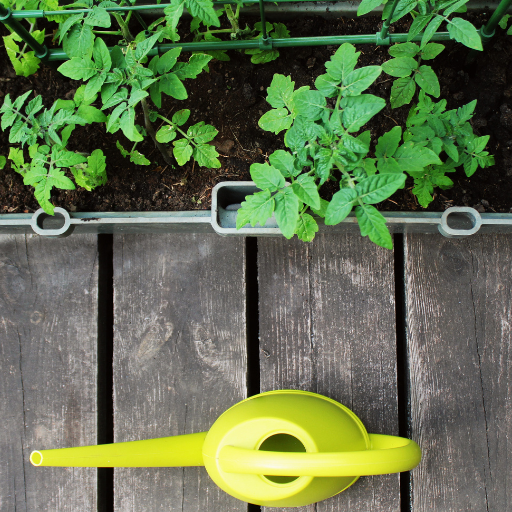
Dissolving 1 to 2 tablespoons of salt available in a gallon of water is one way that Epsom salts can be applied to pepper plants. Every four to six weeks you should use this mixture for drenching the soil surrounding the base of the crops. Alternatively, 1 tablespoon of salt mixed with a gallon of water can be sprayed on leaves as foliar spray. You may instead spread a tablespoonful of dry salt around the trajectory where it would be planted or till lightly into already existing plants when transplanting them into soils as another method of applying it on soils. Pertain moistness so that absorption takes place and avoid damage from being possible to vegetation because before using it, the ground has to be wetted first thing. In addition, regular application will address magnesium shortage and boost healthy growth as well as increased fruit production.
Step-by-Step Guide to Add Epsom Salt During Planting Time
- Prepare the Planting Hole: Dig a hole twice the size of the root ball for your pepper plant. Ensure that the soil is well-aerated and drained to facilitate root growth.
- Mix Epsom Salt with Soil: Before placing the plant into the hole, mix 1 tablespoon of dry Epsom salt with the excavated soil. This will help to ensure even distribution of magnesium and sulfur.
- Place the Plant in the Hole: Position the pepper plant in the hole, ensuring that the roots are spread out uniformly. The base of the plant should be at ground level.
- Backfill with Soil and Epsom Salt Mixture: Refill the hole with the soil and Epsom salt mixture. Gently press the soil down to eliminate air pockets and to support the plant.
- Water Thoroughly: After planting, water the plant thoroughly to help settle the soil and activate the Epsom salt. Ensure the soil is moist but not waterlogged to avoid root rot.
- Monitor Soil Moisture: Regularly check the soil’s moisture level, ensuring it remains consistently moist. This will help in the absorption of nutrients and support healthy plant growth. Continue to water as needed, adjusting for weather conditions.
- Periodic Reapplication: Every four to six weeks, either drench the soil with 1 tablespoon of Epsom salt per gallon of water or apply a foliar spray. This will maintain adequate magnesium levels throughout the growing season.
Best Practices for Applying Epsom Salt Throughout the Growing Season
- Monitor Plant Symptoms: Be observant of magnesium deficiency, which can be shown by yellowing leaves or stunted growth, indicating that your plants may require more Epsom salt.
- Optimal Application Techniques:
- Soil Drench: Mix 1 tablespoon of Epsom salt with 1 gallon of water and pour it directly on the soil around the base of your plants every 4 to 6 weeks.
- Foliar Spray: Mix one table spoonful of Epsom salt with one gallon of water in a spray bottle. For quicker absorption, the solution should be sprayed directly onto the plant’s leaves, preferably in the morning or evening, to avoid scorching from sun rays.
- Consistency and Timing: Apply Epsom salt uniformly throughout the growth season, especially when good flowering and fruiting are needed.
- Complement with Regular Watering: Ensure you follow up with irrigation activities after applying Epsom salts as it aids in dissolving and distributing this nutrient.
- Check Soil pH: Make sure that your soil pH is suitable for your plants. The best pH range for applying Epsom salt is slightly acidic to neutral conditions (6.0-7.0).
- Rotate Applications with Other Fertilizers: Include Epsom salts in your normal fertilizer routine, ensuring that plants get a balanced mix of nutrients. Avoid overapplication because excess magnesium can result in nutrient imbalances.
Using Foliar Spray to Maximize Nutrient Absorption
Foliar feeding is a very specific way of providing plants with nutrients through their leaves, and it allows them to be absorbed quickly and utilized fast without being affected by poor soil conditions. It is important to apply the solution when using foliar feedings during cooler parts of the day, like in the early morning or late evening, because it prevents evaporation as well as leaf burn. Make certain there’s an even distribution of the spray solution on both surfaces of the leaves, upper and lower, for maximum uptake. In addition, do not make spray solutions too concentrated since they can cause burning of leaves, use this practice as part of your regular feed schedule for positive outcomes. Frequent application after every two or three weeks significantly improves plant health and growth particularly during critical growth stages.
What is the Right Dosage of Epsom Salt for Pepper Plants?
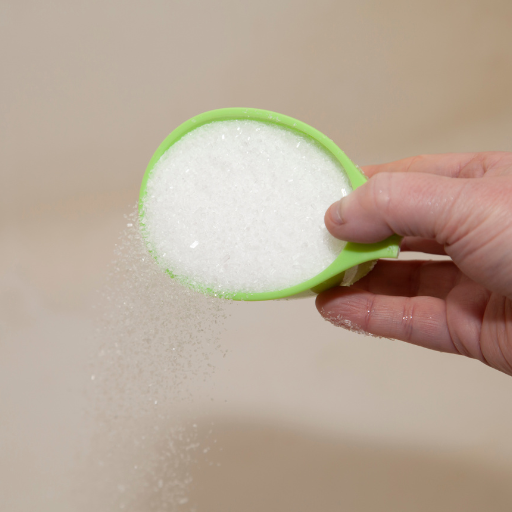
For different pepper plant growth stages and individual crop requirements, there is no specific correct dosage of Epsom salt. The foliar feeding commonly uses one tablespoon of Epsom salt dissolved in a gallon of water. This solution should be used every two weeks to provide consistent magnesium boost. In regard to soil application, mix 1-2 tablespoons of Epsom salts into the planting medium when putting seeds or sprinkle at the base where mature plants are established and water thoroughly. One must always keep an eye on signs of deficiency or over-fertilization in his/her crops and adjust the amount if necessary for good health and optimum yield.
Salt Recommended Per Gallon Of Water
Foliar spray recommendations for most plants, including peppers, call for dissolving 1 tablespoon Epsom salt per gallon of water. Directly mix 1-2 tablespoons Epsom salts into the soil as a manure supplement or around the base, watering immediately after sprinkling. You can also use other methods to determine how well a particular application is working by monitoring plant responses and adjusting dosage levels accordingly.
Tips For Avoiding Over Application Of Epsom Salt
To avoid excessive application of Epsom salt, begin by testing your soil to ascertain existing levels of magnesium before supplementation becomes necessary. This is because some cases could arise that do not require supplementation which might harm them. Only use this fertilizer if there is a proven lack thereof in your soil test results but you need extra Magnesium content in your plot’s soils. If you want to feed through leaves, add strictly recommended amounts of 1table spoonful per gallon during foliar feeding; that is all you need every fortnight; however, add between one and two spoons to the soil while planting or sprinkling around the plant base and then watering thoroughly would be very effective.
Furthermore, monitor symptoms like yellowing leaves and leaf tip burn, among others, which indicate an overdose. To ensure a balanced nutrient supply, alternate with other fertilization practices. In the end, it is good to know that keeping complete records of your rates and timings and monitoring changes in crop health over time could help identify and correct any nutrient imbalance that might occur.
When to Apply Epsom Salt for Best Results?
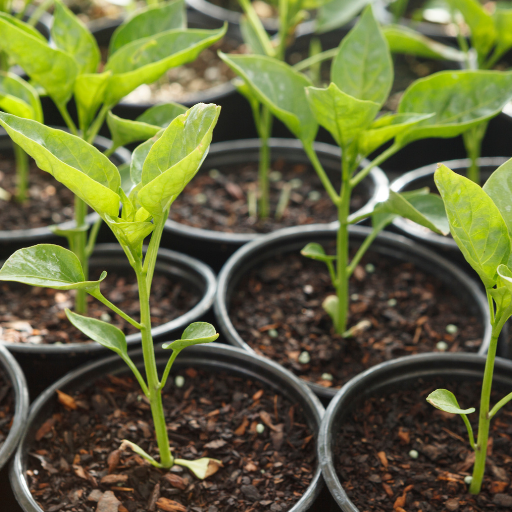
When a plant is just beginning to grow, it would be best to apply Epsom salt, usually around the time of planting and during the growing season when plant growth is stunted or leaves turn yellow. For good results, spread Epsom salt every six weeks throughout the growing season by adding it to the soil, or using it as a foliar spray. This application will help support flower and fruit formation because of an increased magnesium content that can consequently produce healthy blooms and fruit. After its use, water must be appropriate to enhance proper absorption.
Planting Time for Applying Epsom Salt
At this phase in planting while applying Epsom salts it is important to concentrate on initial soil preparation so as to have even distribution and beneficial uptake. It should, therefore, be noted that according to well-renowned sources, 1-2 tablespoons of Epsom salt per square foot of land are recommended to be used before planting after they have been well mixed with soils. The dose supplies adequate magnesium levels essential for better seed germination and early root development required for proper plants establishment.
For example, established crops can benefit from a foliar application of Epsom salt. To make such a solution, the Internet suggests mixing one tablespoon of Epsom salt in one gallon of water is needed. When plants’ leaves show symptoms like yellowing between veins, this concentration may be sprayed twice each fortnight. Morning hours or afternoons are regarded as ideal instances for spraying on leaves in order not to scorch them with sunlight.
Both methods—soil application and foliar spraying—must maintain proper moisture levels at all times. Thorough watering after application ensures excellent nutrient uptake and prevents accumulation that may impose toxic amounts of salts onto roots. Adequate dosages are adjusted based on monitored plant responses, hence achieving a balanced approach towards a nutrient management system.
Epson Salt Usage During Important Planting Phases
- Pre-Flowering Stage: Supplementing with Epsom salts about 3-4 weeks before flowering can aid plant growth by boosting chlorophyll formation and enhancing photosynthesis efficiency. During that period, farmers use 1 tablespoon of foliar application per gallon of water.
- Fruit and Flower Development Stage: Planting area should be treated with 1–2 tablespoons of Epsom salt per square foot to increase blooming and reduce fruit dropping during early stages of fruit and flower production, leading to higher yields. Salt must be well mixed with soil before watering extensively.
- Mid-Season Growth Boost: A foliar spray of one tablespoon of Epsom salt per gallon of water every two weeks will help correct nutritional deficiencies that may occur when plants are showing robust foliage but are deviating from nutrient balance; this usually happens in the middle part of their vegetative growth phase. Spray it either early morning or late evening hours so that leaves won’t get sunburned.
Signs that Your Pepper Plants Need Magnesium Sulfate
To identify, you will have to look for certain signs that pepper plants are magnesium deficient. One common sign is interveinal chlorosis where the tissues between leaf veins turn yellow while the veins stay green. This usually occurs first in older leaves because the nutrient moves readily in plants and is translocated to new growth. Another clue is leaf curling, appearing as edges curling up or inward, accompanied by reddish purple on the undersides of leaves. Additionally, some symptoms linked with lack of magnesium include little or no fruit production and tiny or undeveloped fruits.
Regarding technical parameters, soils containing less than 20 ppm (parts per million) of magnesium indicate a possible deficiency, which thus requires Epsom salt (magnesium sulfate) application. Moreover, if magnesium content in dry weight is below 0.20% based on leaf tissue analysis, then something should be done about it fast. These signs can be addressed promptly through appropriate Epsom salt applications to correct deficiencies thereby improving plant health and yield.
How Does Epsom Salt Compare to Other Fertilizers?
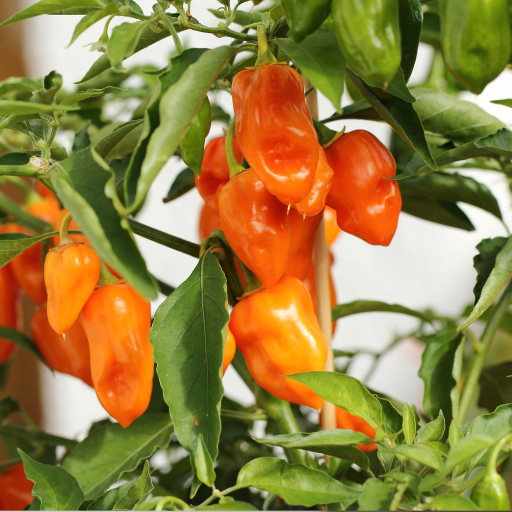
Epsom salt (magnesium sulfate) is distinct from other fertilizers because it contains magnesium and sulfur which are essential for chlorophyll production and enzyme function. While traditional fertilizers contain macronutrients like nitrogen, phosphorus, and potassium (NPK), they may not be rich in micronutrients such as magnesium and sulfur. Epsom salt is a natural substance that can be certified as organic unlike the synthetic fertilizers used today hence its suitability for organic farming. Although it can remedy magnesium deficiencies, Epsom salts should not be seen as a stand-alone fertilizer since they do not supply plants with the full spectrum of nutrients needed for proper growth. Many times Epsom Salt will work best when used along with other fertilizers to ensure that plants get all types of nutrients that they need at once. This form of targeted application improves plant health and productivity by attending to specific nutrient deficiencies without running the risk of over-fertilizing using broad-spectrum fertilizers.
Is Epsom Salt a Complete Fertilizer for Pepper Plants?
Though effective in addressing a deficiency in magnesium and sulfur on pepper crops, Epsom salt cannot be regarded as a complete fertilizer. The fact that these crops require certain essentials like Nitrogen, Phosphorous, and Potassium, which are not found in Epsom salts, makes them incomplete fertilizers. It should, therefore, be added to another balanced fertilizer with all the necessary ingredients so as to enhance good health among peppers, thus increasing their yields.
Combining Epsom Salt with Other Fertilizers
A balanced nutrient profile when combining epsom salt with any other kind of fertilizer is very important for maintaining healthy plant growth. Conduct soil tests to determine specific nutrient deficiencies in your soil before you start mixing these two substances at certain ratios based on the results of the soil tests.
- General Guidelines for Application:
- Epsom Salt: Use 1 tablespoon per gallon of water when applying to leaves or as a soil drench twice a month throughout the growing season.
- NPK Fertilizers: Follow the manufacturer’s instructions for balanced NPK fertilizers, such as 10-10-10 or 20-20-20 formulas suited to the growth stage and plant type.
- Soil Amendment:
- Adjusting Soil pH: Magnesium in Epsom salt improves soil structure and nutrient availability, crucial for maintaining an optimal pH range (usually about 6.0-7.0 for pepper plants).
- Depth of Application: Mix Epsom salt into the top six inches of soil when incorporating it into soil to ensure equal distribution and root accessibility.
- Foliar Spraying:
- Concentration: For foliar application dissolve 1 tablespoon of Epsom salt in one gallon of water and spray the solution on leaves. This method allows faster absorption of nutrients during important growth phases or when immediate correction of nutrient deficiency is required.
- Combining with NPK Fertilizers:
- Mixing Ratios: Always avoid exceeding recommended nutrient concentration when combining npk fertilizers with Epsom salt. For instance, if using a water-soluble npk fertilizer, dilute it according to label directions and apply at the same watering session with Epsom salts while being careful not to over-fertile plants evidenced by leaf burn.
- Timing:
- Growing Season: In most cases, particularly every four to six weeks depending on their nutrient levels, soils should be fed by Epsom salts together with other types of fertilization over the whole planting period.
- Critical periods such as flowering and fruiting should be planned as the target application of fertilizers for pepper plants, to ensure that they can support their peak nutrient requirements.
Can Epsom Salt Be Used for Other Plants in the Garden?
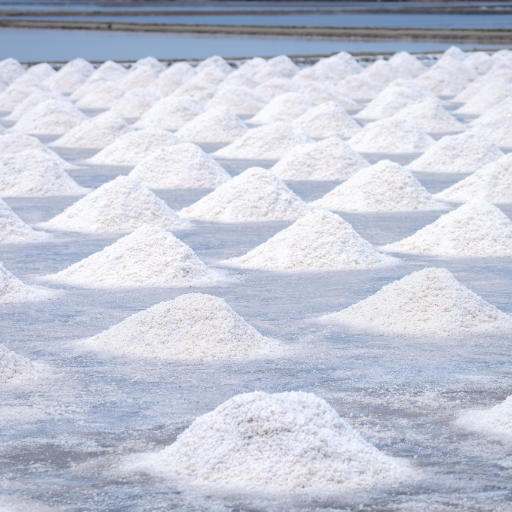
Definitely, Epsom salt can be relied upon by other plants in the garden besides peppers. For example, roses often respond well to Epsom salt applications that may make their blooms brighter and cane stronger. It is recommended to prepare rose beds by adding 1/4 cup of Epsom salt to the soil before planting. In addition, tomatoes benefit from essential magnesium and sulfur supplied by Epsom salts which promote fruit production and reduces blossom-end rot when applied at a rate of 1 tablespoon per foot of plant height once a month. What’s more, it used for turf grasses where the application of a solution made up of 2 tablespoons’ worth of Epsom salt mixed with one gallon water can improve lush growth and relieve magnesium deficiency. As such, this product is a crucible ingredient for different types of gardens.
The Benefits Of Using Epsom Salt For Tomato Plants
Tomato plants have several advantages when you use epsom salt because it contains magnesium sulfate primarily. Magnesium is very important in photosynthesis because it forms the central atom inside chlorophyll that helps them convert light into energy more easily or quickly. To avoid this, regular application of epsom salt helps to prevent yellowing leaves that are usually indicative of insufficient magnesium plant nutrition also called as magnesium deficiency However sulfurs have been recognized as key constituents within epsom salts that help produce vitamins enzymes and amino acids that facilitate good growth rates in all tomato plants apart from preventing many diseases caused by bacteria and fungi moreover if taken at a rate where one tablespoon corresponded to each foot height then its significant changes would happen since tomatoes would become larger tastier and less prone towards blossom-end rotting due to better nutrient intake
In what way does Epsom Salt Help Plants Have Healthier Fruits?
Fruits will be healthier if we use epsom salt because they give plants important nutrients which increase their strength levels thus ensuring their good heath. Epsom salt has magnesium which is essential for photosynthesis; hence, plants are able to convert sunlight into energy more efficiently. This leads to increased plant growth as well as greater fruit yield. In addition, magnesium is required in the process of enzyme activation which is responsible for various physiological processes that are important during fruit formation.
Moreover, sulfur, also an important ingredient used in making Epsom salts, encourages the creation of amino acids, vitamins, and proteins needed by plants for maintaining their structural strength and disease resistance. Using epsom salt improves nutrient uptake hence lowering nutrient-related disorders like blossom-end rot among tomatoes. According to research, it can be stated that for tomatoes, the application rate should be 1 tablespoon per foot height monthly, while sports grasses would require a solution mixed with 2 tablespoons per gallon of water to maintain lush growth.
By integrating these technical parameters into gardening practices, using Epsom salt offers a scientifically supported method to improve both the quantity and quality of fruit production across various plant species.
Tips For General Gardening With Epsom Salt
The overall performance of many species can immensely improve when Epsom salts are applied within general gardening practices. Consider the following tips based on scientific recommendations and horticultural best practices for optimum results:
- Seed Germination: Before planting, soak seeds in a solution containing 1 tablespoonful of Epsom salt dissolved in one gallon of water. The treatment helps germinate at a critical stage in development by supplying the necessary nutrients.
- Transplant Shock: To reduce transplant shock, dissolve 1 tablespoon of Epsom salt in 1 gallon of water and apply it around the newly transplanted plants at the base. This provides magnesium and sulfur quickly to aid in root establishment and growth.
- Leaf Curling Prevention: Regular foliar application helps prevent leaf curling, an indication of lack of magnesium. Spray leaves with a solution containing 2 tablespoons of Epsom salts per gallon every two weeks. This makes sure that nutrients get into the plant through the leaves fast enough.
- Soil Amendment: For soils deficient in magnesium, put 1-2 tablespoons of Epsom salt directly on top of the soil next to each plant during the growing season. This will correct any deficiency, thereby ensuring great crops.
- Flowering and Fruiting Enhancement: Use Epsom salt as part of your watering process if you want more blossoms and fruits. If you have fruit-bearing plants, for instance, you are advised to use a rate equivalent to one tablespoon per foot high once each month. It leads to blooms and fruits that are vibrant in health.
References are made to studies and gardening literature that validate these parameters as efficient methods for improving plant health while maximizing yield, respectively. In conclusion, gardeners can effectively use this technique by observing these scientifically grounded principles for better yields hence healthier gardens using Epson salts as important mineral supplementations.
Frequently Asked Questions (FAQs)
Q: What are the benefits of using Epsom salt in the garden for pepper plants?
A: Epsom salt in the garden provides essential nutrients like magnesium and sulfur, which are critical for seed germination, photosynthesis, and the production of chlorophyll. These nutrients help improve plant cell walls, leading to stronger and healthier pepper plants.
Q: How do I properly use Epsom salt for plants like peppers?
A: To use Epsom salt for plants, dissolve two tablespoons of Epsom salt in a gallon of water. This solution can be used as a foliar spray or soil drench. Apply it to the plants every two to four weeks for optimal results.
Q: Can Epsom salt be used for potted plants as well?
A: Yes, Epsom salt is beneficial for potted plants too. Mix a tablespoon of Epsom salt with a gallon of water and water your potted pepper plants with this solution once a month to help them thrive.
Q: What is the role of sulfur found in Epsom salt for plants?
A: Sulfur, which is present in Epsom salt, is vital for plants. It’s a critical component in the formation of plant cell walls, enzymes, and vitamins. This helps plants grow stronger and more resistant to diseases.
Q: How often should I mix Epsom salt into the soil for my pepper plants?
A: For best results, mix Epsom salt into the soil once every six months. You can also use a foliar spray or soil drench made from a solution of Epsom salt and water every two to four weeks during the growing season.
Q: Is Epsom salt safe for all types of plants, not just peppers?
A: Yes, Epsom salt is safe for a variety of plants, including vegetables, flowers, and ornamental plants. However, always start with a small amount to see how your specific plants respond before increasing the dosage.
Q: How does Epsom salt help plants with magnesium deficiency?
A: Epsom salt is a naturally occurring mineral rich in magnesium, which is essential for plant growth. When plants show signs of magnesium deficiency, such as yellowing leaves, adding Epsom salt can help restore proper magnesium levels and improve plant health.
Q: Are there any signs to look for to know if my plants need Epsom salt?
A: Common signs that plants might benefit from Epsom salt include yellowing leaves, poor growth, and a general lack of vigor. If you’ve noticed these issues and suspect a magnesium or sulfur deficiency, adding Epsom salt may help.
Q: Can you share a gardening quote related to using Epsom salt?
A: “Think of salt as a naturally occurring mineral that adds a touch of magic to your garden. Adding Epsom salt can make your plants grow stronger and healthier, turning your garden into a thriving paradise.”
Q: What precautions should I take when using Epsom salt in the garden?
A: While Epsom salt is generally safe, it’s important not to overuse it. Excessive amounts can lead to soil imbalances and potentially harm plants. Always follow recommended guidelines, and start with small applications to observe how your plants respond.






